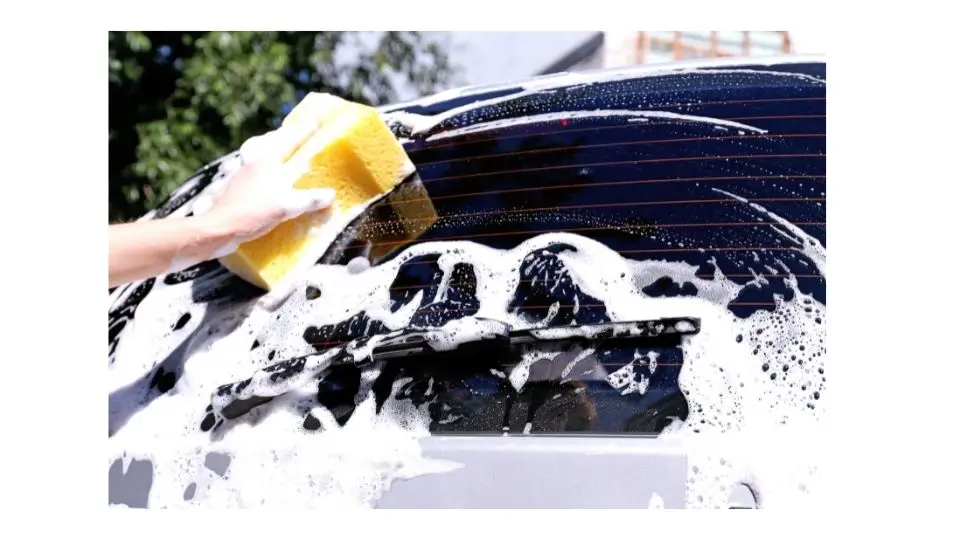Car detailing has become an essential aspect of maintaining the appearance and overall condition of a vehicle. With the constant exposure to dirt, dust, and other environmental elements, cars require regular cleaning to ensure they look their best and remain in top-notch condition. When it comes to car detailing, www.schmicko.com.au suggests various methods available, but the two most commonly used are shampooing and steam cleaning. Both techniques have their own unique benefits and advantages, but choosing the right one can be a daunting task for car owners.

In this article, we will delve into the differences between shampooing and steam cleaning in car detailing, highlighting their pros and cons. By exploring the techniques in-depth, we hope to provide car owners with the necessary information to make an informed decision on which method is best suited for their vehicle’s needs. Whether you are a car enthusiast or simply looking for ways to maintain your car’s appearance, this article is a must-read for anyone seeking to understand the differences between shampoo vs steam car detailing.
Shampoo: traditional, effective, but time-consuming
When it comes to car detailing, traditional shampooing has long been recognized as an effective method for cleaning and rejuvenating a vehicle’s interior. We are referring to shampoo and extraction as opposed to exterior car wash shampoo. Its ability to lift dirt, grime, and contaminants from the surface is unparalleled. However, it is important to acknowledge that this tried-and-true approach does come with a drawback: it can be time-consuming. The process of applying shampoo, scrubbing, rinsing, and drying can take a substantial amount of time, especially when dealing with larger vehicles or heavily soiled areas. While the end result may be worth the effort, it is essential for car detailers to weigh the benefits of traditional shampooing against the potential time investment required to ensure maximum efficiency and customer satisfaction.
Steam: eco-friendly, efficient, and versatile.
Steam cleaning, on the other hand, offers car detailers a more eco-friendly, efficient, and versatile alternative to traditional shampooing. With steam, there is no need for harsh chemicals or excessive water consumption, making it a greener option for those who prioritize sustainability. The high-temperature steam effectively loosens and lifts dirt, grime, and stains from the car’s surface, leaving it spotless and sanitized. Additionally, steam cleaning is remarkably efficient, as it significantly reduces the time and effort required for cleaning. Its versatility is another advantage, as steam can be used on various surfaces inside and outside the vehicle, including upholstery, carpets, windows, and even engine components. As the car detailing industry continues to evolve, the eco-friendly and efficient attributes of steam cleaning make it a compelling option for professionals seeking to enhance their services and meet the demands of environmentally-conscious customers.
Shampoo: removes stains, dirt, and odors.
When it comes to car detailing, shampoo serves as a reliable and effective solution for removing stains, dirt, and odors from the vehicle’s interior and exterior surfaces. The specialized formula of car shampoos is designed to break down and lift stubborn stains, whether they are caused by spills, pet accidents, or general wear and tear. The shampoo’s foaming action helps to encapsulate and remove dirt particles, leaving a clean and refreshed appearance. Additionally, the pleasant scent of car shampoos helps to eliminate any lingering odors, providing a more enjoyable driving experience for both the driver and passengers. Car detailing professionals rely on the power of shampoo to achieve immaculate results and restore the vehicle’s aesthetics to their original glory.
Steam: sanitizes, deodorizes, and disinfects.
Steam cleaning has emerged as a revolutionary method in the world of car detailing, offering a range of benefits beyond traditional shampooing techniques. Not only does steam effectively sanitize, deodorize, and disinfect, but it also eliminates the need for harsh chemicals that can be harmful to both the environment and the vehicle’s surfaces. The high temperature of the steam penetrates deep into upholstery, carpets, and other hard-to-reach areas, effectively killing bacteria, germs, and allergens. Furthermore, steam’s natural deodorizing properties eliminate unpleasant odors, leaving the car smelling fresh and clean. This innovative approach to car detailing provides a thorough and eco-friendly solution, ensuring a safer and healthier driving environment for all.
Why shampoo is better than steam
When it comes to car detailing, shampooing remains the superior choice over steam cleaning. Shampooing not only effectively cleans the surfaces of the vehicle but also tackles stubborn stains and grime. Unlike steam cleaning, shampooing allows for targeted application, ensuring that the cleaning agents reach every nook and cranny of the car’s interior. Additionally, shampooing provides a gentle yet thorough cleaning process that is safe for all types of upholstery and carpets. The use of specialized car shampoos also helps in preserving the integrity of the materials, preventing any potential damage or discoloration. With its proven track record of delivering exceptional results, shampooing remains the preferred method in professional car detailing, ensuring that your vehicle receives the highest level of care and cleanliness it deserves.
After examining the pros and cons of shampoo and steam detailing methods, it is clear that both have their merits. Shampooing provides a thorough and deep clean, while steam cleaning offers a more eco-friendly and efficient option. Ultimately, the best method for your car will depend on your personal preferences and the specific needs of your vehicle. Whichever route you choose, make sure to carefully research and consult with a professional detailer to ensure the best results for your beloved car.

Robert Anderson is a world class motorhead who rebuilt his first carb at age 10, his first engine at age 15, and completed his first full hotrod build when he was just 18! Previously, he has ran a part warehouse, delivered pizzas, and managed the service department for a $20 million/year revenue dealership. Robert knows cars like few others and he is passionate about sharing his knowledge.
